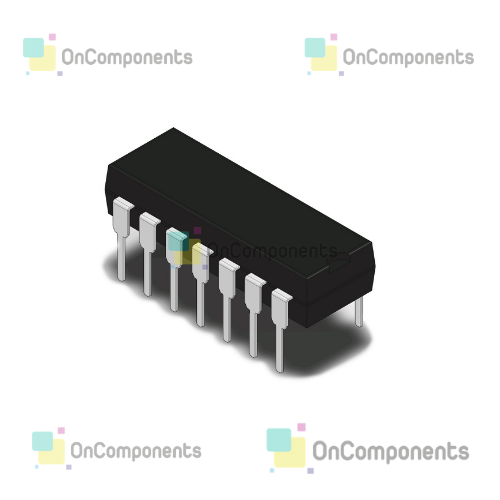The CD4047B is capable of operating in either the
monostable or astable mode. It requires an external capacitor (between pins 1 and 3) and an external resistor
(between pins 2 and 3) to determine the output pulse width
in the monostable mode, and the output frequency in the
astable mode.
Astable operation is enabled by a high level on the astable
input or low level on the astable input. The output frequency (at 50% duty cycle) at Q and Q outputs is determined by the timing components. A frequency twice that of
Q is available at the Oscillator Output; a 50% duty cycle is
not guaranteed.
Monostable operation is obtained when the device is triggered by LOW-to-HIGH transition at + trigger input or
HIGH-to-LOW transition at ? trigger input. The device can
be retriggered by applying a simultaneous LOW-to-HIGH
transition to both the + trigger and retrigger inputs.
A high level on Reset input resets the outputs Q to LOW, Q
to HIGH.
Features
? Wide supply voltage range: 3.0V to 15V
? High noise immunity: 0.45 VDD (typ.)
? Low power TTL compatibility: Fan out of 2 driving 74L
or 1 driving 74LS
Monostable Multivibrator
Features
? Positive- or negative-edge trigger
? Output pulse width independent of trigger pulse duration
? Retriggerable option for pulse width expansion
? Long pulse widths possible using small RC components
by means of external counter provision
? Fast recovery time essentially independent of pulse
width
? Pulse-width accuracy maintained at duty cycles
approaching 100%
Astable Multivibrator Features
? Free-running or gatable operating modes
? 50% duty cycle
? Oscillator output available
? Good astable frequency stability
typical= ?2% + 0.03%/?C @ 100 kHz
frequency= ?0.5% + 0.015%/?C @ 10 kHz
deviation (circuits trimmed to frequency VDD = 10V
?10%)
Applications
? Frequency discriminators
? Timing circuits
? Time-delay applications
? Envelope detection
? Frequency multiplication
? Frequency division

